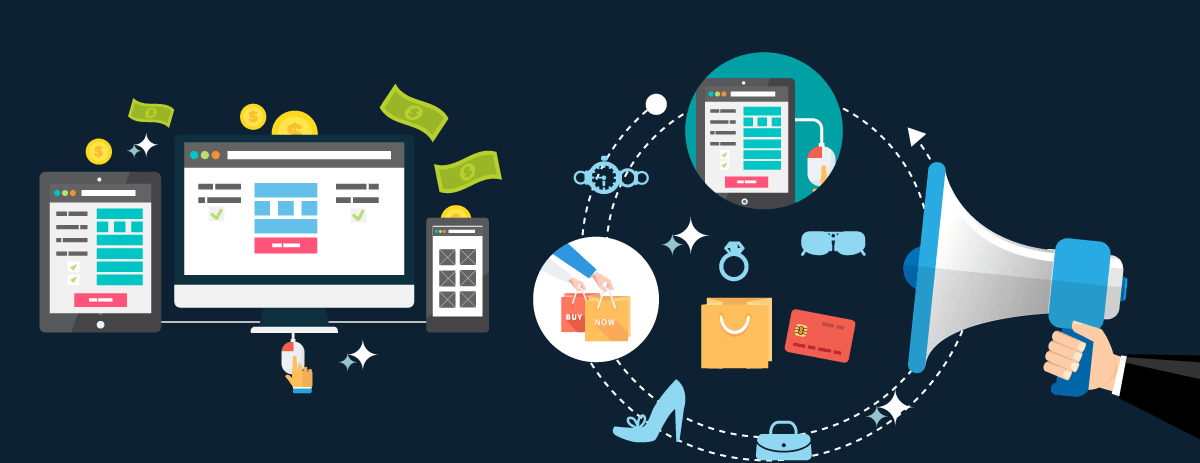10 E-commerce Trends To Leverage In 2023
Global e-commerce sales reached $5.7 billion in 2022 and are forecast to grow 53% annually to reach an estimated $8 trillion by 2026.
Consumers unanimously prefer the convenience and simplicity of online shopping. As a result, businesses are deploying new tactics – and doubling down on existing ones – to meet the changing requirements of modern e-tail shoppers.
Take a look at the latest e-commerce trends that will continue to drive growth for the online shopping industry in 2023.
1. Subscription-based models

The consumer industry is undergoing a significant transformation with the emergence of subscription-based business models. These models involve selling products or services at regular intervals and are expected to become a $1.5 trillion market by 2025, as reported by Forbes. Such models provide businesses with income stability, while offering consumers affordability and convenience.
Advancements in digital payment, data analytics, and logistics handling at scale have enabled industries such as software, entertainment, automobile, airline, gaming, health, and wellness to adopt the subscription-based model. As we move into 2023, we can expect to see a growing number of “as-a-service” options for both consumers and enterprises.
2. The DTC (direct-to-consumer) business model

As we move into 2023, more businesses are expected to adopt a direct-to-consumer (DTC) model by eliminating third-party middlemen and selling directly to their customers. By cutting out unnecessary vendors, businesses can offer products and services at lower prices and faster delivery times. This also enables them to establish stronger and more personalized relationships with consumers, ultimately leading to increased brand loyalty.
However, implementing the DTC model requires businesses to pay close attention to customer feedback, complaints, queries, and other interactions. To strengthen brand and customer engagement, businesses will likely create dedicated customer support teams and invest in consumer-centric approaches.
3. Inflation considerations
The global inflation rate rose to 8.8% in 2022 but is poised to reduce to 6.5% in 2023. This has impacted consumer spending habits as people simply have less money for e-tail products. As a result, people will become more discerning with their purchasing choices and will spend more time researching products prior to paying for them. Therefore, e-commerce businesses that invest in digital marketing to make their products easily searchable will come out on top.
Large purchase orders will likely drop while smaller luxury items will be considered a “splash out”. Businesses will re-market products to speak to value and need and will de-bundle products to be sold as stand-alone items to cater to the reduced spending capabilities of consumers.
Although not really an e-commerce example, a great example inflation-based campaign was done by Del Taco promoting their latest “20 under $2” menu that makes light of drastic inflation rates. By exaggerating fuel prices and the general cost of living in a humorous way – using terms like “$1 bajillion” for eggs – then following it up with a sentiment of togetherness saying “We get it, we got you”, the brand successfully laughs with us, not at us.
4. AI, chatbots, and personalisation

AI creates personalised shopping experiences through smart product recommendations and predictive search. It helps with data mining and natural language processing (NLP) which enables customers to shop using voice commands.
Now that voice is ranked on Google, more e-commerce businesses will leverage voice technology to increase sales. Machine learning (ML) helps retailers with demand forecasting and personalised shopping experiences by gathering user data to create unique customer profiles.
AI continues to create personalised customer care services that cater to the requirements of every customer to create tailored shopping experiences. Chatbots assist online customers from the moment they log on right through to checkout, and handle customer queries and complaints instantly, 24-7.
5. AR and VR

Augmented Reality (AR) and Virtual Reality (VR) help bring online shoppers closer to products by showing items in vivid detail as they have never been presented online before. In 2022, there were 1.1 billion AR user devices in circulation worldwide. By 2024, this number will reach 1.7 billion.
With the Web3 and metaverse movement gaining stride, AR and VR are how we will plug into these digital worlds and satisfy our e-tail needs – making them a must-have for e-commerce businesses in 2023 and beyond.
With the rise of online shopping together with advancements in mobile AR and VR technology, industries like fashion and home decor already leverage these technologies to showcase products immersively, creating better customer experiences.
WeAreBrain developed the AR Praxis Vloercalculator that uses AR technology to make multiple plans of rooms in a user’s house, accurately measuring the available floor space. If your business requires AR-powered solutions to create unmatched customer experiences, get in touch to see how we can help you.
6. Headless e-commerce

Headless e-commerce architecture gives e-commerce businesses high degrees of flexibility to customise and upgrade their site ad hoc without compromising on speed or efficiency. This means that content can be displayed beyond websites and apps – from kiosks to smartwatches and beyond.
With portable backends, data, and data structures, businesses can be nimble to adapt to changes in the market in real-time. Most advantageously, headless architecture enables businesses to offer multi-platform shopping experiences by displaying the best frontend tools for each platform/device.
7. Social media shopping

There are currently 4.74 billion daily active social media users worldwide, accounting for almost 60% of the global population. Roughly 64% of users rely on social media to research products. As global social media shopping generated $724 billion in 2022, it created a groundswell of businesses tapping into social commerce where users can purchase directly from social media platforms.
Now, users don’t need to be redirected to an e-commerce website to make a purchase as the process is simplified, allowing them to make purchases directly on a social media platform.
According to HubSpot, over 22% of internet users in the US were expected to make at least one purchase through Facebook in 2021. Nearly 13% were expected to shop on Instagram and over 5% were estimated to shop on Pinterest.
8. Live shopping

Live stream shopping, or just live shopping, is a hybrid between traditional home shopping TV, live video streaming content marketing, and influencer marketing all rolled up into a clever term “entertainmerce”. Of all the e-commerce trends, this one has developed a strong presence in the Asian market.
In 2023, live streams became the most popular tool for increasing online sales via social media. Almost 71% of live-stream viewers have purchased items via social media, while 48% want to continue purchasing using in-platform commerce tools. In 2023, we will see continued efforts to engage customers to shop directly off social media sites, especially the rise of live streams.
9. Consolidated technology stacks

To serve online customers at every digital touchpoint, powering an e-commerce website with a robust tech stack is the only way to stay on top of business processes, deliver on customer expectations, and remain competitive. For e-commerce businesses experiencing their platform becoming difficult to maintain and keep stable, it is crucial to consolidate their tech stack and remove redundancies.
More and more, platforms gather integrations that cause slow speeds, clutter, and bloat. In 2023, we see more businesses opting for a hybrid-SaaS platform that can be endlessly customisable and scalable to ensure stability.
10. Sustainability and eco-friendly shopping

Consumers are becoming more sustainably and ethically conscious, aware that our purchasing habits are impacting our environment. The fashion industry is the 2nd largest polluting industry after oil. Thankfully, technology is helping e-commerce businesses to readjust their business models to be more sustainable.
Virtual samples that change the buying/selling lifecycle, body scans that ensure the right fit to reduce returns, and AR and VR tools to allow shoppers to virtually try on items without travelling to physical stores are all helping reduce emissions.
Digital fashion will continue to be a major trend in 2023 with the advent of new marketplaces and digital worlds creating fresh customer experiences for people wanting to express their personalities through their virtual persona. Additionally, we see continue to see more green startups and sustainable entrepreneurship practices in 2023 to fight against the environmental problems facing our world.
Summary
These technologies are proving how they can best serve e-commerce retailers in the digital era, and as the tech evolves in functionality and sophistication, the results will be far superior customer satisfaction. Aiming to please customers at every touchpoint, reducing hassles and providing personalised efficiency will drive engagement and brand loyalty.


